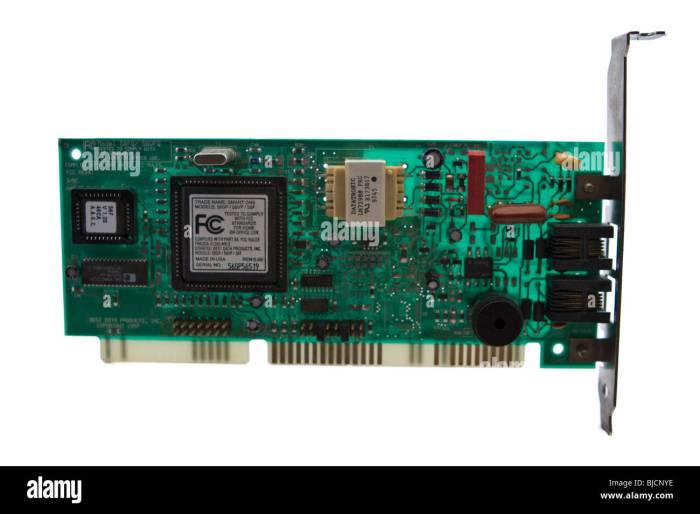PC modem or drive crossword, embark on a journey through the annals of computing history, where we unravel the evolution of these essential components that shaped the digital landscape. From humble beginnings to cutting-edge advancements, prepare to be captivated by their transformative impact on our technological world.
Modems, the gatekeepers of communication, and drives, the guardians of data, have played pivotal roles in connecting us and preserving our digital memories. Join us as we delve into their types, functions, and the fascinating comparison that unveils their unique strengths and applications.
Historical Evolution of PC Modems and Drives
The development of PC modems and drives has been a key factor in the growth of personal computing. From the early days of dial-up modems to today’s high-speed broadband connections, modems have enabled computers to connect to the outside world.
Similarly, the evolution of storage devices from floppy disks to solid-state drives has allowed computers to store and access data more efficiently.In the early days of personal computing, modems were essential for connecting to online services such as CompuServe and The Source.
These modems were typically slow, with speeds of 300 or 1200 bits per second (bps). However, the introduction of faster modems, such as the 56k modem, in the late 1990s made it possible to access the internet at much higher speeds.The
development of broadband modems in the early 2000s further revolutionized the way people used the internet. Broadband modems provided much faster speeds than dial-up modems, making it possible to stream video and music, and download large files much more quickly.In
addition to modems, the development of storage devices has also been essential for the growth of personal computing. In the early days of personal computing, floppy disks were the primary storage medium. Floppy disks were relatively small, with a capacity of only 1.44 megabytes (MB).
However, the introduction of hard disk drives (HDDs) in the early 1980s provided much more storage space. HDDs were initially expensive, but prices came down over time, making them more affordable for consumers.The development of solid-state drives (SSDs) in the early 2000s further revolutionized the way people store data.
SSDs are much faster than HDDs, and they are also more reliable. SSDs are now the preferred storage medium for many consumers, although HDDs are still used in some applications where large storage capacity is required.The evolution of PC modems and drives has been a key factor in the growth of personal computing.
These technologies have made it possible for computers to connect to the outside world and store data more efficiently. As these technologies continue to evolve, we can expect to see even more advances in the way we use our computers.
Key Advancements and Milestones in the Evolution of PC Modems and Drives
Some of the key advancements and milestones in the evolution of PC modems and drives include:
- The introduction of the first dial-up modem in 1958
- The development of the first broadband modem in the early 2000s
- The introduction of the first floppy disk drive in 1976
- The development of the first hard disk drive in the early 1980s
- The introduction of the first solid-state drive in the early 2000s
Role of Industry Leaders in the Evolution of PC Modems and Drives
Several industry leaders have played a key role in the evolution of PC modems and drives. These companies include:
- AT&T
- Hayes
- IBM
- Intel
- Seagate
- Western Digital
These companies have developed and manufactured many of the key technologies that have made the evolution of PC modems and drives possible.
Types and Functions of PC Modems

PC modems come in various types, each designed for specific connectivity, speed, and protocol requirements. Understanding these types is crucial for selecting the right modem for your needs.
Connectivity Types
- Dial-up Modems:Connect to the internet through a telephone line, providing slow but reliable connections. Examples: US Robotics 56K Faxmodem, Zoom 56K modem.
- DSL Modems:Utilize telephone lines but offer faster speeds than dial-up modems. Examples: ADSL2+ modem, VDSL2 modem.
- Cable Modems:Connect to the internet through a cable TV line, providing high-speed connections. Examples: DOCSIS 3.0 modem, DOCSIS 3.1 modem.
- Fiber Modems:Connect to the internet through fiber-optic cables, offering the fastest speeds and lowest latency. Examples: GPON modem, XGPON modem.
Speed Considerations
Modem speeds are measured in bits per second (bps). The higher the speed, the faster the data transfer. Common modem speeds include:
- Dial-up modems: Up to 56 Kbps
- DSL modems: Up to 100 Mbps
- Cable modems: Up to 1 Gbps
- Fiber modems: Up to 10 Gbps
Protocols
Modems use different protocols to communicate with the internet. The most common protocols are:
- PPP (Point-to-Point Protocol):Establishes a direct connection between the modem and the internet service provider (ISP).
- PPPoE (Point-to-Point Protocol over Ethernet):Used by DSL and fiber modems to connect to the ISP over an Ethernet connection.
- DOCSIS (Data Over Cable Service Interface Specification):Used by cable modems to communicate with the cable TV network.
Types and Functions of PC Drives

PC drives play a crucial role in data storage and retrieval, enabling users to store, access, and manage their digital information efficiently. Various types of PC drives exist, each with its unique storage capacity, interface, and read/write capabilities.
Hard Disk Drives (HDDs), Pc modem or drive crossword
HDDs are traditional mechanical drives that utilize spinning disks coated with magnetic material to store data. They offer large storage capacities at relatively low costs, making them suitable for bulk data storage. However, HDDs have slower read/write speeds compared to other drive types and are more susceptible to physical damage due to their moving parts.
Solid State Drives (SSDs)
SSDs are flash-based drives that use non-volatile memory to store data. They offer significantly faster read/write speeds than HDDs, making them ideal for applications requiring quick data access, such as operating systems and software programs. SSDs are also more durable and energy-efficient than HDDs.
Optical Drives
Optical drives, such as CD-ROM, DVD-ROM, and Blu-ray drives, use lasers to read and write data on optical discs. They are primarily used for data backup, distribution, and entertainment purposes. Optical drives offer high storage capacities but have relatively slow read/write speeds.
Network Attached Storage (NAS)
NAS devices are specialized storage systems connected to a network, allowing multiple users to access and share data remotely. NAS provides centralized storage, data backup, and file sharing capabilities, making it suitable for small businesses and home users.
Cloud Storage
Cloud storage refers to data storage services provided over the internet. It allows users to store and access their data remotely from any device with an internet connection. Cloud storage offers scalability, accessibility, and data backup options.
Latest Drive Technologies
Recent advancements in drive technology have introduced new types of drives with enhanced performance and capabilities. These include:
- Hybrid Drives:Combine HDDs and SSDs to offer a balance of storage capacity and speed.
- NVMe Drives:Utilize the PCIe interface for faster data transfer rates.
- Optane Memory:Non-volatile memory technology that provides extremely high speeds for data access.
Comparison of PC Modems and Drives

PC modems and drives are two distinct technologies that serve different purposes in computing systems. Modems are used for communication, while drives are used for data storage.
Key Differences
| Feature | Modem | Drive |
|---|---|---|
| Purpose | Communication | Data storage |
| Connectivity | Network | Computer |
| Speed | Varies (e.g., 56 Kbps, 100 Mbps) | Varies (e.g., HDD: 50 MB/s, SSD: 500 MB/s) |
| Storage Capacity | N/A | Varies (e.g., HDD: 500 GB, SSD: 1 TB) |
| Cost | Relatively low | Varies (HDD: cheaper, SSD: more expensive) |
Advantages and Disadvantages
PC Modems*
-*Advantages
Enables internet connectivity
- Facilitates data transfer over networks
-*Disadvantages
Limited speed compared to direct connections
Susceptible to interference and noise
PC Drives*
-*Advantages
Provides permanent data storage
Higher storage capacity than modems
- Faster data access speeds
-*Disadvantages
Requires physical space within the computer
If you’re struggling with a pc modem or drive crossword, don’t forget to check out the delta tau delta pledge pin for inspiration. It’s a unique and stylish piece of jewelry that can help you solve those tricky crossword clues in no time.
And when you’re done, you can wear it as a reminder of your crossword-solving prowess.
Can be more expensive than modems
Troubleshooting Common Issues: Pc Modem Or Drive Crossword

Encountering problems with PC modems and drives is not uncommon. To ensure optimal performance and prevent future issues, it’s essential to identify and resolve these problems promptly. Here’s a comprehensive guide to troubleshooting common issues and optimizing performance:
Identifying Common Problems
- No internet connection or slow speeds with PC modems.
- Inability to read or write data from PC drives.
- Unusual noises or vibrations from drives.
- Error messages or system freezes related to modems or drives.
Step-by-Step Troubleshooting
Follow these steps to troubleshoot and resolve common issues:
- Check physical connections:Ensure that all cables and connections are secure and undamaged.
- Restart devices:Power off and restart the modem or drive, as well as the computer, to refresh the system.
- Run diagnostics:Utilize built-in diagnostic tools or third-party software to identify specific errors.
- Update drivers:Install the latest drivers for the modem or drive to ensure compatibility and optimal performance.
- Check for malware:Run a malware scan to rule out any potential infections that may interfere with device functionality.
Optimizing Performance
To enhance performance and prevent future problems, consider these tips:
- Use high-quality cables:Invest in durable and reliable cables to minimize signal interference and data loss.
- Keep firmware up-to-date:Regularly update the firmware of modems and drives to improve stability and performance.
- Clean and maintain drives:Regularly clean drives to remove dust and debris that can affect read/write operations.
- Use surge protectors:Protect devices from power surges and fluctuations by using surge protectors.
- Back up data regularly:Create regular backups of important data to safeguard against data loss in case of drive failure.
FAQ Explained
What is the primary function of a PC modem?
A PC modem enables communication between computers over telephone lines or other networks, facilitating data transfer and internet access.
How do PC drives differ from each other?
PC drives vary in storage capacity, interface types (e.g., SATA, NVMe), read/write speeds, and form factors, catering to different data storage needs.
What are the key advantages of using a PC modem?
PC modems provide a reliable and cost-effective way to connect to the internet, especially in areas with limited broadband availability.